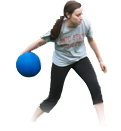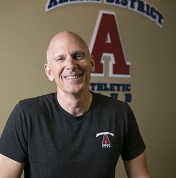
Soreness is good and scales are pointless: the 10 biggest myths in fitness
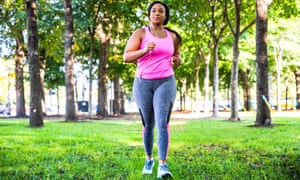
Photograph: LeoPatrizi/Getty
With new exercises invented every week, new gurus trending by the day and a fresh study that contradicts all the other ones released every time you think you’re getting the hang of things, it’s easy to think that fitness is confusing – but it isn’t.
The fundamentals stay the same, and the science is pretty well agreed – so by simply arming yourself with a few basic facts, you can step into any gym forewarned against whatever fresh nonsense the #fitstagrammers are preaching. These are the 10 biggest myths in fitness – exercise your synapses for a couple of minutes by memorising them, and do your curls with confidence.
Soreness is a sign of a good workout
Yes, there’s something masochistically satisfying about limping your way down a flight of stairs the morning after a big legs workout, but delayed onset muscle soreness – Doms to its Insta-buddies – isn’t actually a convincing indicator of progress. It’s thought to be caused by micro-tears in muscle, and tends to crop up when you do movements you’re not used to, when you deliberately slow down the “eccentric” (or muscle-lengthening) part of whatever move you’re doing (such as the downward bit of a squat) or just do a ridiculous number of reps. Conversely, then, you can eliminate soreness almost entirely by keeping the reps low, or doing moves that don’t have an eccentric, such as throws and sled pushes. There is such a thing as pain-free progress.
Lifting heavy will make you bulky
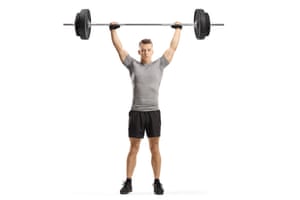
Scales are pointless
This one’s been popularised by modern fitness gurus, who will (fairly sensibly) point out that weight isn’t a true measure of progress, as fluctuations in the amount of water being retained can lead to day-to-day shifts in the numbers, and putting on muscle can lead to the numbers going up while you’re making progress in the right direction. This doesn’t mean you should toss away your scales entirely. “Yes, you have to understand that short-term fluctuations are inevitable and don’t represent changes in body fat,” says Emma Storey-Gordon, the trainer/owner of ESG Fitness. “But, over time, changes in scale weight are predictive of body fat. Even if you are also building muscle, the rate at which you can lose fat will be much quicker than the rate at which you can build muscle.” Don’t become overreliant on them, but scales can show whether you’re moving in the right direction.
Exercise is bad for your knees
Actually, it’s more like the opposite: properly done squats will strengthen the stabiliser muscles around your knee joints, safeguarding you against injury as well as making you a bit more capable of bounding up escalators. As for running, a 20-year study conducted by Stanford University found that consistent runners (many of whom were well into their 70s by the time the research period ended) showed a lower incidence of arthritis than non-runners as they aged. It also showed that runners have a lower risk of osteoarthritis and hip replacements, suggesting that pounding pavements isn’t actually as bad for you as advertised.
You can ‘spot reduce’ fat

Less rest means you’re working harder
CrossFit and endless neon-tinted, EDM-soundtracked fitness classes have made “rest” a four-letter word in the fitness industry, but constant movement for the sake of it could actually be hindering your gains, not helping them. “For most people – especially beginners – periods of recovery between sets or intervals allows for higher-intensity, better-quality movement, lower risk of injury and a greater training stimulus that is likely to lead to superior results,” says the performance and wellbeing coach George Anderson. Or, in other words: if you push yourself for an hour straight, you’ll be forced to lift lower weights, go slower and generally put in less work than you might with some strategic downtime. And the optimum varies – for fat loss, anywhere from 15 to 60 seconds between sets is ideal, but for strength you might spend five minutes preparing for ultra-intense efforts.
Machines are pointless (or dangerous)
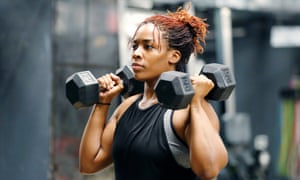
The cross-trainer is the best full-body cardio machine
Let’s be honest: you’ve never seen Britain’s greatest living Olympian, Sir Steve Redgrave™, dry-heaving over the side of a cross-trainer. “It may be intuitive and burn some calories, but that’s all this outdated relic offers,” says Dr Cameron Nichol, the founder of RowingWOD. “When done correctly, the rowing machine uses 86% of your muscles spanning nine major muscle groups.” The rower also works with the time you have – if you need a short, horrible finisher, a 500-metre sprint will leave you sucking air and burning fat, while a more ponderous 10k feels almost meditative and the Olympic-length 2k is a test of will as much as power.
Shorter is better

Once, the four-minute Tabata – 20 seconds of work and 10 seconds of rest, repeated eight times – seemed the logical endpoint of the workout-shortening craze, with claims that it could replace much longer training sessions while offering roughly the same benefits. Now it seems almost glacial, with three, two, and one-minute workouts promising to harness high-intensity interval training’s (HIIT) mystical powers and leave you more time for Candy Crush. The truth? Anything is better than nothing, and it’s certainly possible to make some gains in whatever limited time you have, but longer workouts have effects that no micro-workout can mimic. Oh, and by the way: in the original Tabata study, the test subjects – who were professional cyclists – worked so intensely that some of them refused to countenance trying the protocol again. If you’re not doing that, there’s no guarantee it will work as advertised.
There is one ‘best’ way to train
Is running better than lifting for longevity? Do you need the mobility yoga offers more than a really jacked set of quads? Is Zumba just a waste of valuable time that you could spend boxercising? “Whatever training style you experiment with, you’ll find someone ready to argue that everything else is useless and stupid, that you should stick with them or go home,” says Dr Michael Banna. “This kind of absolutism risks deflating people by telling them that their efforts have been pointless. The reality is, any physical activity has health benefits; the right type is the one that doesn’t injure you, make you sad or make you want to stop.” Ideally your physical activity should include a mixture of cardio, resistance and mobility work spread across the week – but do what you enjoy.
• Joel Snape is a former editor of Men’s Fitness and runs the website LiveHard

